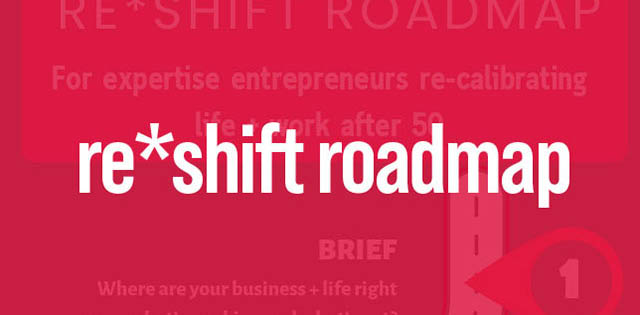Are You Pricing Yourself Right Out Of Work?
- September 6, 2016
- Posted by: Rochelle
- Category: Fees + Revenue

The WordPress developer flashed across my screen in a nanosecond of Twitter interaction.
I’m always on the lookout for savvy technical resources, so I tracked down her website and cruised through it. Our world views seemed to gel and I could see she might be a fit with a segment of my client base.
And then I saw her fees.
Yep, she posted her hourly rate. And it was about 60% of what I usually encounter for her niche.
A pure bargain hunter might be thrilled. But instead, it made my radar click on.
Why would she charge so much less than her competition? She didn’t appear to be inexperienced. Was she tentative or perhaps not very good? Could she handle the needs of a demanding client? I didn’t want to experiment and so my curiosity died there.
She underpriced herself right out of a conversation.
And that’s the dirty little secret of pricing.
Your clients and prospects will often instantly decide whether your brand supports your price and vice-versa.
It’s not always logical—but it is sticky.
So what’s the right pricing strategy for your services and digital products?
You align your price points with your experience, your reputation and your value.
Let’s hit each of those in turn.
Your experience. This is not about how many years you’ve been plying your craft, but the lessons you can apply—quickly—to the challenges and dreams of your ideal clients. Maybe your business is new, but you’ve been solving a certain kind of problem many times over. That has value you want to reflect in your pricing.
Your reputation. Hint: the more well known you are, the easier it is to set premium prices. I’m not saying it’s always fair, but when you have a brand name people recognize, they’ll pay more. That’s why McKinsey commands more than ABC Consulting and why Seth Godin could price himself higher than 99.9% of independent marketers. Becoming known has value that translates into a price tag.
Your value. The more demonstrated value you deliver, the more you can charge. My WordPress programmer was selling time by the hour, not outcomes clients could rally around. And yes, value can be a tricky thing to show, but there’s one universal solution: real-life client success stories and testimonials. Not just any old stories, but those that zero in on your unique deliverables, targeted to your sweet-spot clients.
Setting the right prices for your services and products is an integral part of your brand. Don’t let it be an after-thought.
p.s. Like what you see here? Head on up to that orange bar to sign up pronto and I’ll deliver my weekly insights directly to your in-box.







Excellent post, and advice.
Pricing and compensation gets discussed several times each year in both of the lawyer’s groups in our Gotham City Networking, Inc.®, and each December at one of the attorney Continuing Legal Education (CLE) programs I attend. Beyond that I always found it helpful and useful discussing fee levels with an attorney colleague (who I met in Gotham) and a CPA who runs the CLEs (and also in Gotham).
Fees are one of those areas where it’s great to have a small community to share best practices isn’t it? Thanks Corey!
Thanks Rochelle. Helpful post. On time.
Timing is everything Joe 🙂
Pricing can be a very difficult thing to get “right”. I have struggled with pricing issues for certain services I offer to my clients for many years, and still struggle with those same issues for the same services. I know what I’m worth, but my biggest problem seems to be how to convey that to potential (and current) clients.
Some of the services I provide are billed at what I feel are “good” prices. I have lost a few clients because they believe my fees are “too high”, but for most clients, my fees are “in line” with what others charge (even though my fees are hourly or retainer, depending on the service(s) provided).
Great post Rochelle. Something to always keep in mind when setting up new services, or even providing quotes to potential new clients.
Thank you Kenneth! Your situation is a great example of why pricing is fluid vs an absolute. We change, the market changes, clients change and we all have to adapt.
I have never been a proponent of advertising my pricing model in advance of any communication. Just as it did for you, you never know who and why someone is being turned off. Have a conversation. Learn what the prospect is looking for. Then set the price accordingly. You can’t negotiate with an invisible / unknown person.
Isn’t that the truth Ed? There are times when posting prices is a good idea, but generally not when your services are heavily relationship-based…
I have found that by including your pricing, you can filter your leads though. Someone working in wordpress and other web development fields, you find a lot of people asking for “deals”, “steals” and expect “high school computer science rates”.
Having a price out there, can deter a lot of low ballers, and only leave you with real potential leads.
Of course, an hourly rate makes you a pair of hands, not a solution to their problem… and that is where the value is.
This is where a case study, which includes an “Investment budget” might be more appropriate, where a price is matched against the value created, as an ROI.
Its a tricky situation.
If everyone else is hiding their rates, being bold enough to present them might be what your customers need to be able take the first step in trusting you.
Also, by not naming your pricing as pricing, but Investment Budget, you are already slating your services as an investment, not an expense.
Just found your blog, I’m sure I’ll be reading a lot more of your posts. Thanks Rochelle.
Lovely blog post Rochelle and great feedback from your community. We describe ourselves as ‘reassuringly expensive’ (in leadership development and coaching) because we want people to feel the investment they’re making (in themselves, their teams) – not just write a check. We also have a pricing scale, so that everything is negotiable – and we know our costs, our margins and what our bottom line price (for self-paying clients) is. We also stand behind our promise to deliver more than 100% return on investment – based on our clients’ benchmarks.